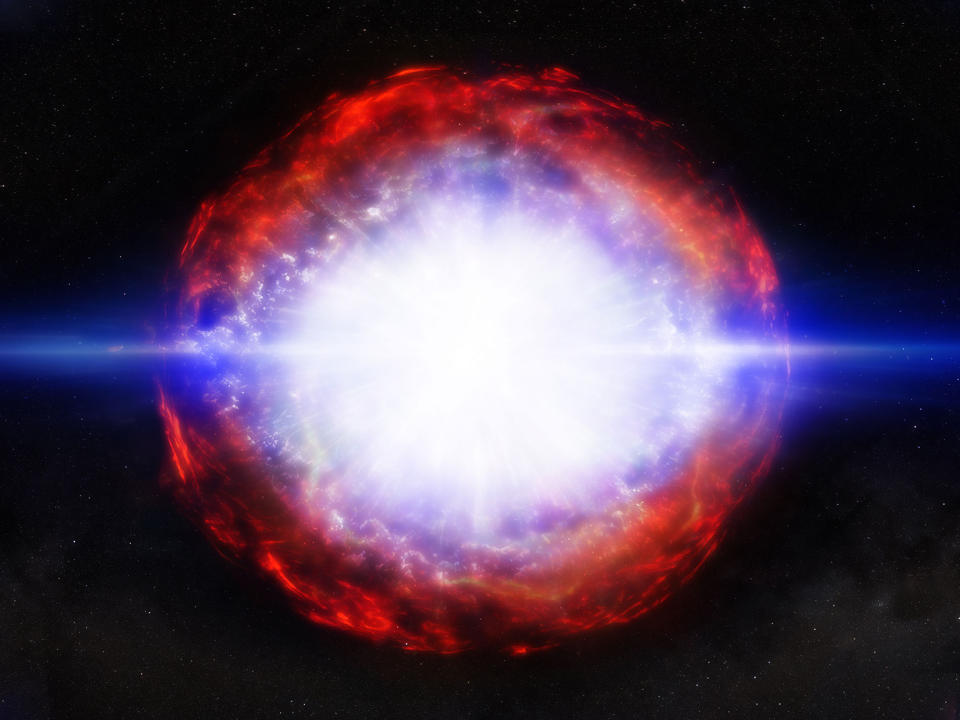While examining a nearby supernova with NASA’s Fermi gamma-ray space telescope, scientists uncovered a larger mystery in an effort to discover how these stellar explosions fire charged particles called cosmic rays.
The team found that the supernova, called SN 2023ixf, was completely devoid of gamma-ray emissions, which should be present when cosmic ray particles are accelerated to speeds near the speed of light. This is a discovery that could challenge our understanding of supernovae. Scientists have long believed that these were cosmic ray factories pumping out enormous amounts of gamma rays.
SN 2023ixf is a “new” supernova (at least as we see it here on Earth) discovered on May 18, 2023. It is 21 million light years away from Earth. Caused by the death and collapse of a supergiant star whose mass is estimated to be about 12 times that of the Sun, SN 2023ixf is the brightest supernova relatively close to Earth detected by Fermi since 2008, when the telescope began looking for these events.
But this powerful event is missing a key component. This is extremely strange.
Relating to: Peek inside the remnants of an 800-year-old supernova and see a ‘zombie’ star
“Astrophysicists previously estimated that supernovae convert about 10% of their total energy into cosmic ray acceleration,” team member and University of Trieste researcher Guillem Martí-Devesa said in a statement. “However, we have never directly observed this process. With new observations of SN 2023ixf, our calculations show that the energy conversion drops to as low as 1% within a few days after the explosion.
“This doesn’t rule out supernovae as cosmic ray factories, but it does mean we have a lot to learn about their production.”
Mysterious cosmic ray factories
Trillions of cosmic rays hit the Earth’s atmosphere every day, and about 90% of these charged particles are the atomic nuclei of hydrogen; the rest are free electrons or nuclei of heavier elements.
However, investigating the source of cosmic rays has been difficult. Because as these charged particles travel millions of light years to reach the Earth, they encounter many magnetic fields that direct them. This infinite bounce means that it is almost impossible to reconstruct the orbits of cosmic rays. High-energy photons or gamma rays do not suffer such deviations and can therefore be used as tracers of cosmic ray production.
“But gamma rays reach us directly,” said Elizabeth Hays, a Fermi project scientist at NASA’s Goddard Space Flight Center in Greenbelt, Maryland. “Cosmic rays produce gamma rays when they interact with the matter around them. Fermi is the most sensitive gamma-ray telescope in orbit, so when it fails to detect an expected signal, scientists are forced to explain its absence.
“Solving this mystery will provide a more accurate picture of the origins of the cosmic ray.”

Supernovae occur when the cores of stars approximately eight times larger than the Sun run out of fuel required for nuclear fusion. This also ends the outflow of energy that provides radiation pressure to support a star against its own gravity.
When this cosmic conflict, which has been going on for millions of years, comes to an end, the star’s core collapses as gravity wins the clear victory. The outer layers are then blown outward in a supernova explosion.
This pierced material causes a shock wave that rapidly propagates from the dying star, striking surrounding gas, dust, and accelerating particles, creating cosmic rays. These shock waves can last up to 50,000 years and affect interstellar matter during that time. Cosmic rays, especially when interacting with interstellar gas and dust, create gamma ray photons.
In 2013, Fermi discovered that this phenomenon occurs around supernova remnants in our own galaxy, the Milky Way. This discovery revealed that these supernova remnants did not create particles with high enough energy to match what scientists measured on Earth. One reason for this may be that supernovae accelerate particles to create the most energetic cosmic rays only in the first days after the collapse of the star that ejected them.
This picture became even more complicated as Fermi stared at SN 2023ixf for months after the supernova was first detected by other telescopes in visible light. Despite Fermi observations immediately following the supernova explosion, the NASA space telescope still could not see any gamma rays from SN 2023ixf.
The team has several possible explanations for why this supernova produced cosmic rays but not gamma rays, at least not that Fermi could detect. One theory is that the supernova remnants were unevenly distributed and aligned so that gamma rays did not flow towards the Earth, so Fermi could not find them. Another possibility is that the debris around this supernova may be absorbing the gamma rays produced.
Related Stories:
— What happened after 2 star explosions captured in breathtaking new NASA image
— Astronomers get a rare look at the oldest known supernova, dating back to 185 B.C.
— These supernovae create a storm, contributing to cosmic life and death
Astronomers will now continue to study SN 2023ixf in other wavelengths of light and create computer models to learn what might be causing its strange appearance.
“Unfortunately, not seeing any gamma rays does not mean that there are no cosmic rays,” said Matthieu Renaud, a team member and astrophysicist at the Montpellier Universe and Particle Laboratory. “We have to review all the fundamental hypotheses regarding acceleration mechanisms and environmental conditions in order to convert the absence of gamma rays into an upper limit for cosmic ray production.”
The team’s research has been accepted for publication in the journal Astronomy and Astrophysics.